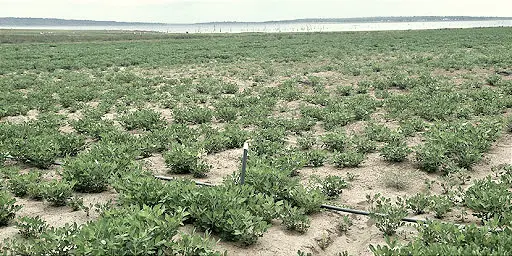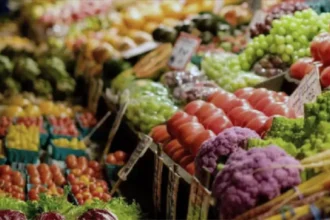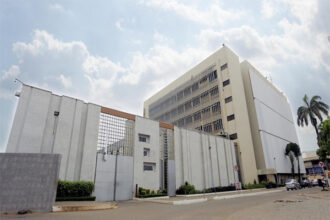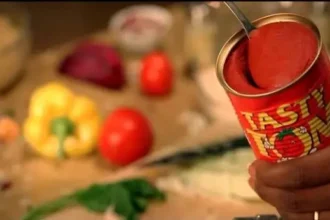If you want to understand Ghana, look beyond the cities and into the fields. The true pulse of the nation beats in its fertile soil, where the majority of its people work to feed the country and power the economy. Agriculture isn’t just an industry here; it’s a way of life, a cultural heritage, and the foundation of the nation’s future.
From the cocoa that sweetens the world to the cassava that fills local markets, Ghana is an agricultural gem. But where does this bounty come from? Let’s take a road trip through Ghana’s most productive farming regions and meet the landscapes and people that make it all happen.
Why Farming is Everything
Before we hit the road, it’s important to know why this matters. Farming is the backbone of Ghana. It:
- Puts Food on the Table: It’s the source of what we eat every day, ensuring food security from Accra to Tamale.
- Fuels the Economy: It employs over half of Ghana’s workforce, especially in rural areas, and is a major source of export income, with cocoa leading the charge.
- Connects Us to Our Roots: For many Ghanaians, the land is a connection to family history and tradition.
Despite its importance, farmers face real challenges, from unpredictable weather due to climate change to difficulties getting loans or modern equipment. But their resilience is what keeps Ghana growing.
A Tour of Ghana’s Agricultural Powerhouses
1. The Ashanti Region: The Cocoa Kingdom
When you think of Ghanaian agriculture, you think of cocoa, and the Ashanti Region is its royal seat. Districts like Amansie West are blanketed with cocoa farms. But it’s not a one-crop region.
Drive through the countryside and you’ll see vast fields of plantains, maize, and yams. The soil here is generally fertile, but farmers are increasingly turning to sustainable practices to keep it healthy for future generations.
2. Brong-Ahafo Region: The Nation’s “Food Basket”
True to its nickname, Brong-Ahafo is a powerhouse of food production. With fertile soils and access to rivers like the Tano, this region is a major producer of maize, rice, yams, and cashews. It’s a region of immense potential, where both traditional methods and modern machinery work side-by-side to feed the nation.
3. The Central Region: Coastline and Cash Crops
Here, the economy is split between the sea and the soil. Along the coast, vibrant fishing communities haul in the day’s catch. Inland, the landscape shifts to lush plantations of oil palm, cocoa, and sweet, sun-ripened pineapples. The soil is rich, and farmers are champions of techniques like crop rotation to keep it that way.
4. The Eastern Region: A Tapestry of Green
A key player in the cocoa industry, the Eastern Region’s districts, like New Tafo, are synonymous with quality beans. But look closer, and you’ll find a diverse agricultural tapestry. The region’s proximity to Lake Volta and its fertile lands make it ideal for oil palm, citrus fruits, and cassava. A growing interest in organic farming is adding a new, exciting layer to its agricultural story.
5. The Volta Region: Fertile Lands and Mighty Waters
Blessed with exceptionally fertile soil, the Volta Region is a key area for staples like maize and cassava. However, its most defining feature is the massive Lake Volta, which supports a thriving fishing and aquaculture industry, providing protein and livelihoods for countless communities.
6. The Northern Region: Resilience in the Savanna
The climate here is harsher, hot, and dry with a single rainy season. The sandy soils demand resilience, and the farmers here have it in abundance. They specialize in drought-tolerant cereals like millet, sorghum, and maize, as well as the incredibly valuable shea nut. Farming here is largely subsistence, a testament to the hard work of feeding families against the elements.
7. The Upper East Region: The Cereal Specialists
Sharing a similar climate with the Northern Region, the Upper East has carved out a niche as a specialist in cereals like millet and sorghum, as well as groundnuts. Despite the challenging environment, the region has agricultural potential, with farmers increasingly using techniques like crop rotation and improved seeds to improve their yields sustainably.
8. The Western Region: The Rainforest’s Bounty
This is a region of immense wealth, and much of it comes from the land. It’s a cocoa giant, with districts like Sefwi-Wiawso producing a significant portion of the country’s beans. The high rainfall creates a lush environment for other tree crops like oil palm, rubber, and coconuts. The challenge here is that heavy rains can wash nutrients from the soil, making sustainable practices crucial for long-term health.
9. The Greater Accra Region: Feeding the Metropolis
You might not expect vast farms in the bustling capital region, but agriculture is alive and well. To supply the massive markets of Accra, farmers in peri-urban areas focus on vegetables, fruits, and poultry farming. It’s a testament to the adaptability of Ghanaian farmers, who find a way to cultivate the land even on the doorstep of a major city.
The Future is in the Soil
Ghana’s agricultural potential is far from fully tapped. The success of these regions shows what is possible. The next chapter of Ghana’s farming story will be written by embracing technology, improving access to financing, and, most importantly, by continuing to support the farmers themselves.
Their work doesn’t just put food on our tables; it weaves the very fabric of our nation. So, the next time you enjoy a square of chocolate or a plate of banku, remember the journey it took from one of these vibrant farming regions to your home.










